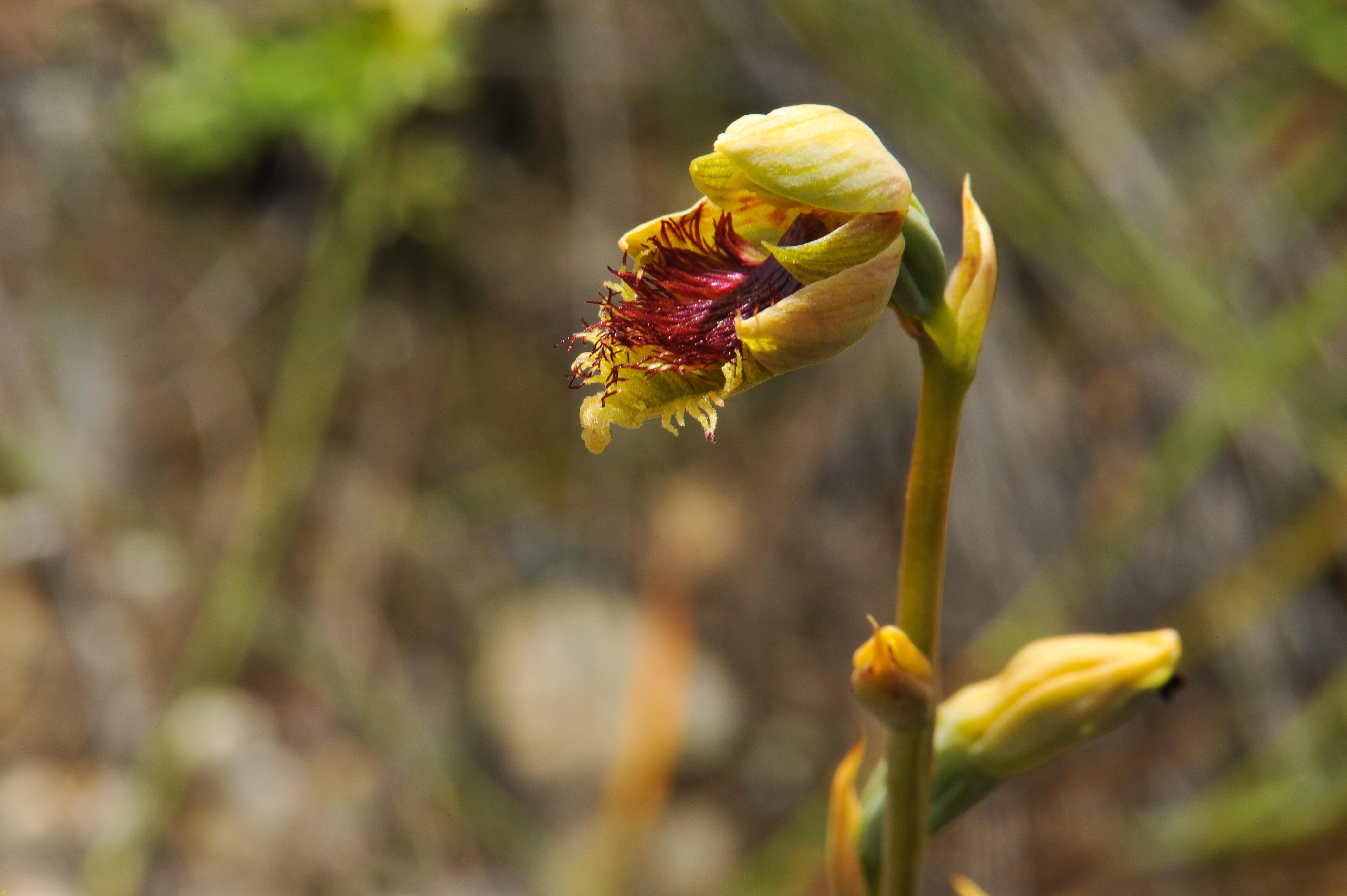Scientific Name: Calochilus herbaceus Endemic Having a natural distribution confined to a particular geographic region
Common Name: pale beard-orchid
Family Classification (Clade): Monocots
Family: Orchidaceae
Form Description: Slender beard orchid narrow, short leaf.
Height (m): 0.15 – 0.4
Flowers: 1-10 green flowers with reddish stripes, often cupped. Oval-shaped labellum covered with purple bristly hairs with a visible tapered glandular tail and a greenish column with false eye spots.
Fruit: Papery capsule
Municipality
Plant Communities
Habitat Notes
Prefers sedgeland and heathland on poorly drained or damp peats, clays and sandy soils. Also in teatree scrub. Widespread and common in lowland areas except for much of the east coast. Also occurs on King Island and Furneaux Group.
Site Tolerance
Exposed, Moist, Waterlogged
Soil Tolerance
Clay, Loam, Nutrient-poor, Poorly-drained, Sandy
Frost Tolerance
Tender
General Notes
Grows on wet sandy or peaty soils, often colonising banks and the edge of tracks after disturbance. Often found around old logging sites. Flowers without fire.
Propagation Calendar
-
Flowering Month
Jan Feb Mar Apr May Jun Jul Aug Sep Oct Nov Dec -
Seed Collecting Month
Jan Feb Mar Apr May Jun Jul Aug Sep Oct Nov Dec -
Sowing Month
Jan Feb Mar Apr May Jun Jul Aug Sep Oct Nov Dec -
Cutting Month
Jan Feb Mar Apr May Jun Jul Aug Sep Oct Nov Dec
Propagation Method
Seed Information
Seed Treatment Notes
Orchid seeds are very minute yellow, brown or blackish dust-like particles. Orchid seeds are produced within a capsule that splits at maturity and releases thousands to millions of seeds. Dispersed by wind and water and only germinate following infection of the embryo by a suitable mycorrhizal fungus. Very few seeds become mature plants. For more information see Jones, Wapstra, Tonelli, Harris (1999): The Orchids of Tasmania.

